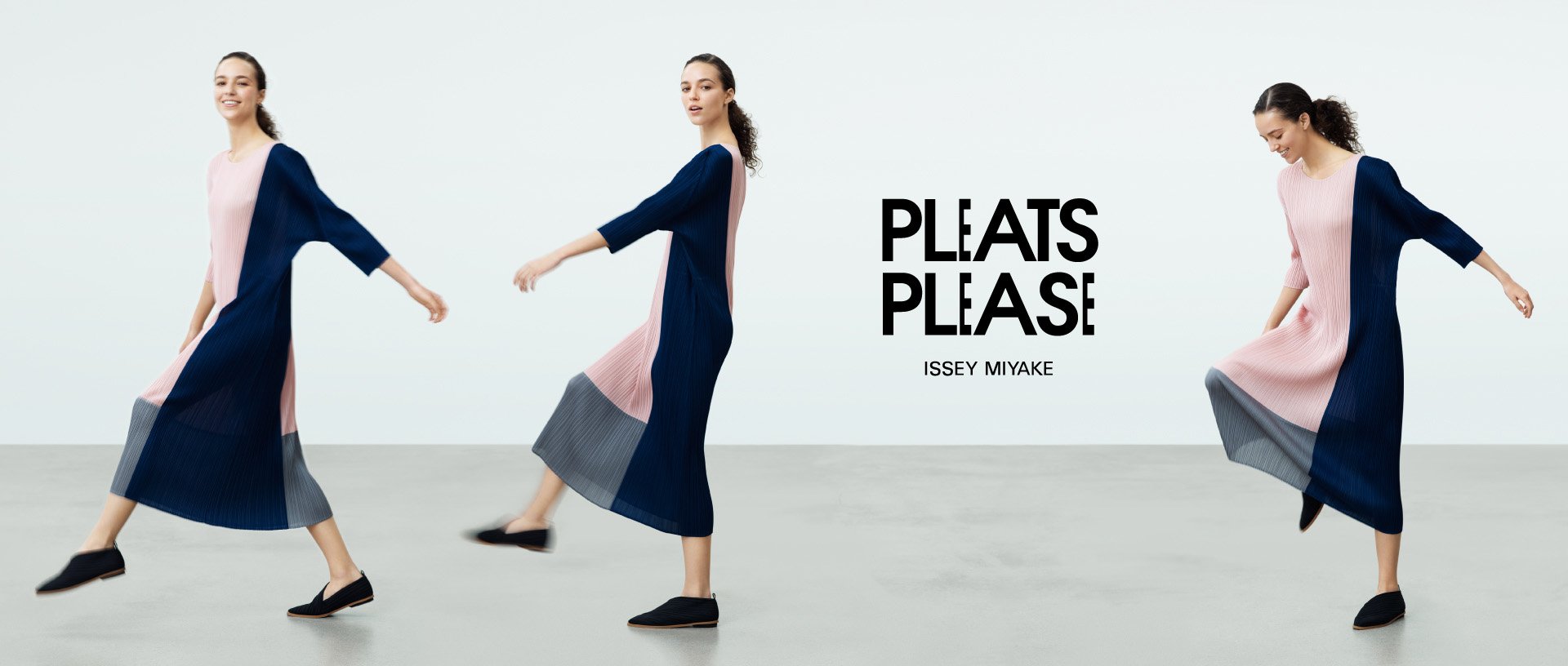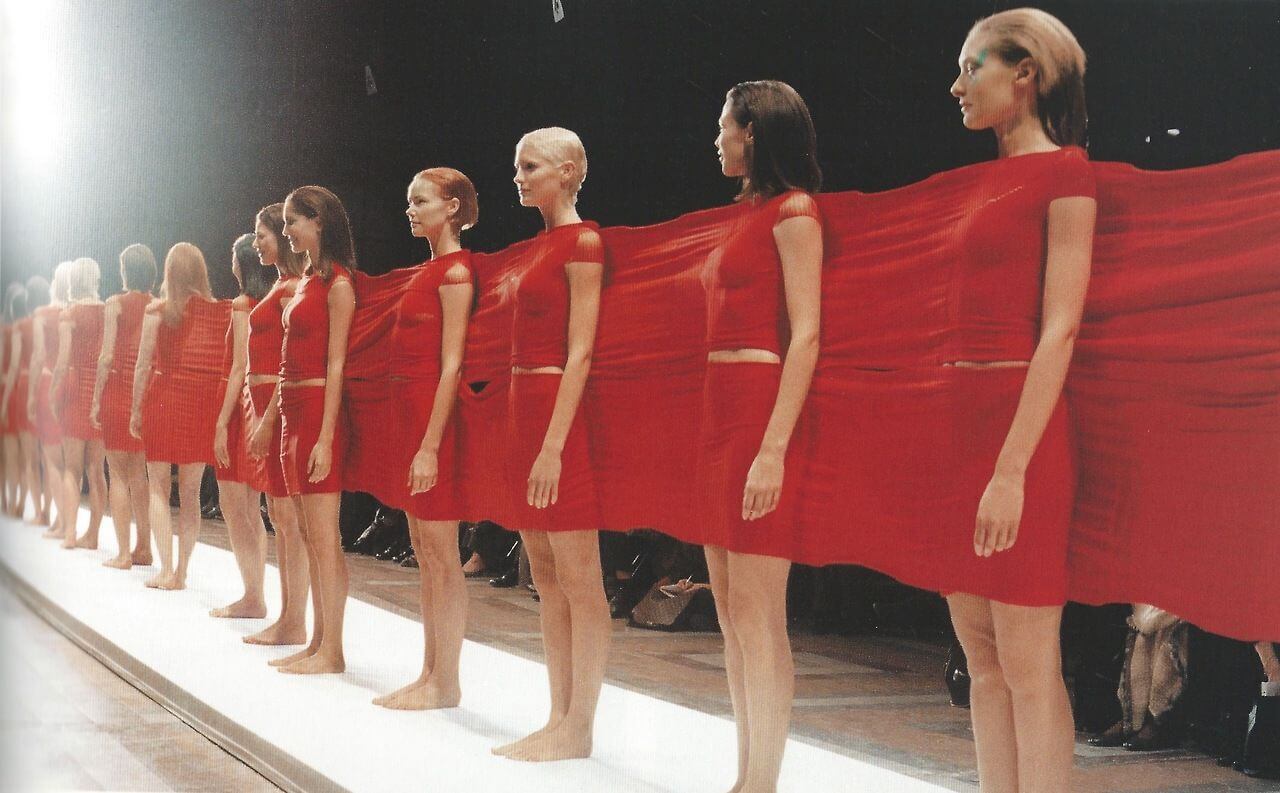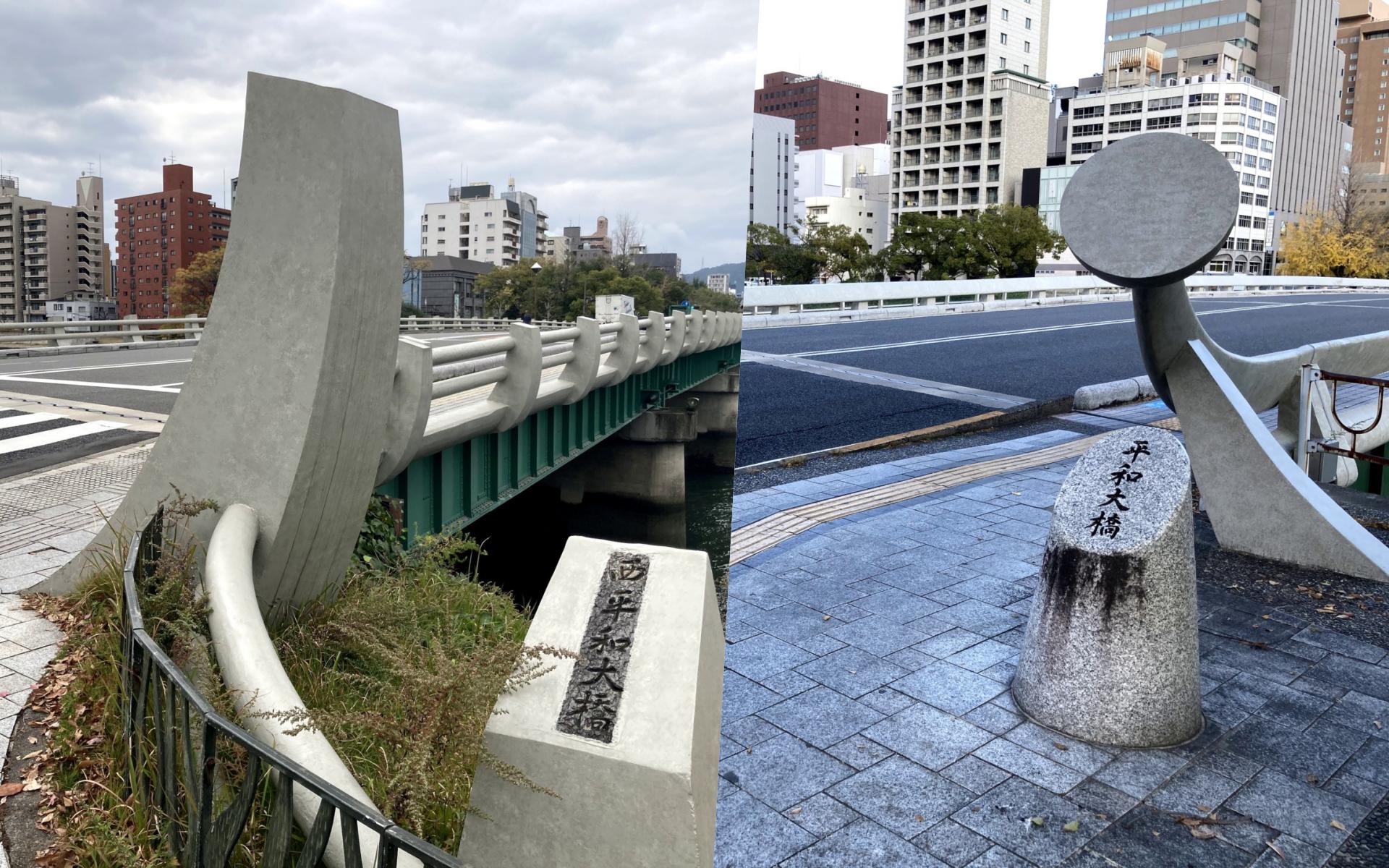Classic English Curio
《經濟學人》賞析—三宅一生
要如何論斷三宅一生的 84 年人生?皺褶衣,Bao Bao 包,還是 Steve Jobs 生前最愛的黑色套頭衫?《經濟學人》以「造物 monozukuri」來為這位名滿全球的日本時尚設計師下了人生註腳。
A piece of cloth: Issey Miyake saw clothes in a completely new way 一枚布:三宅一生以嶄新角度看待服裝
第 9312 期 (2022/0911 出刊) 的《經濟學人》在 Obituary 專欄中刊出紀念日本時尚設計師三宅一生的訃告。
訃告在如《紐約時報》、《經濟學人》等重要的媒體中,都配有固定版面,用以對重要人物的生平做蓋棺論定。
訃告作家要能夠利用小小版面將某人的一生功過做出褒貶,還要寫得吸引讀者,一定要具備非常高的寫作技巧,因而這些文章通常都是學習寫作的極佳參考素材。
需要參加考試的朋友,一定要先看英文,有看不懂的單字也不要一下子放棄,也不要馬上看中文翻譯,盡量利用前後文推想,猜猜不懂的單字是什麼意思,好逼出自己的潛力。這對於參加考試來說,至關重要。
本文長度約 1,100 字,比雅思、托福閱讀測驗長度稍長。字彙難度就在雅思、托福這個等級。但是如果對於時尚流行不熱衷的讀者,或許需要搭配查詢三宅一生的設計作品,才能夠完全掌握文中某些描寫的部分。
英文原文與對應之中文翻譯整理如下,每個段落附有該段主題導引。如果不想受到引導,可以點選前面所附原文連結。練習閱讀時若有對語意不清楚之處,可供查閱對照,以提升閱讀理解能力。
-
全文以 anecdote 引出三宅一生的行事風格
The Japanese maker of extraordinary things died on August 5th, aged 84
In 2016, an elderly woman sent Issey Miyake a sheet of washi paper. It had been hand-made by her in Shiraishi, in northern Japan, from the inner bark of the gampi tree or the paper mulberry bush. Once soaked in water and dried in the sun, the fibres were tougher than those of wood pulp. For a thousand years washi had been used for everyday clothes, toys and priests’ vestments; there had once been dozens of factories in Shiraishi. Now the only provider was this woman, who thought Japan’s most famous designer might like a sample for his archive. But he did not store it away. His first thought was, what can I make with this?, and his first act was to pin it into the rough shape of a kimono jacket. All clothing in ancient times had started like this, as a simple rectangle of woven stuff from a hand-loom. That simplicity remained the touchstone from which his ideas sprang.
點此看中文翻譯
這位元日本非凡事物的製造者於 8 月 5 日去世,享年 84 歲
2016 年,一位老太太給三宅一生寄來一張和紙。這張紙是她在日本北部的白石市手工製作的,是用甘皮樹或紙桑樹的內皮製成的。一旦在水中浸泡並在陽光下曬乾,其纖維比木漿的纖維更堅韌。一千年來,和紙一直被用來製作日常服裝、玩具和神官的法衣;白石市曾經有數十家工廠。現在唯一的供應商是這位女士,她認為日本最著名的設計師可能會喜歡在他的檔案中加入這件樣品。但他並沒有把它封存起來。他的第一個念頭是,我可以用這個做什麼?他的第一個動作是把它釘成和服外套的粗略形狀。在古代,所有的衣服都是這樣開始的,是由手搖紡織機織成的簡單的長方形。這種簡單性仍然是他構思產生的試金石。
-
名利、興趣與團隊
The world saw him as a fashion designer, a highly successful one, the name behind a brand that has around 300 stores worldwide and offshoots into scent, bags and furniture. But fashion itself did not interest him, nor the fame of a name. He hid from the commercial side, leaving that to well-trained deputies, while he stayed as a small cog of creativity, playful but self-effacing, travelling constantly to see local textiles and materials and, over much tea-drinking in his design laboratories, inspiring the team of daring minds he had gathered round him.
點此看中文翻譯
全世界都把他看作是一名時裝設計師,一名非常成功的設計師,一個在全球擁有約 300 家專賣店,並延伸到香水、箱包和傢俱各領域的品牌背後的名字。但他對時尚本身並不感興趣,對一個名字的名氣也不感興趣。在商業方面他躲得遠遠地,把它留給訓練有素的副手,而他則作為創意的一個小齒輪,俏皮但又不出風頭,經常旅行去看各地的織品和素材,同時在他的設計實驗室中伴隨著大量茶飲,激勵他身邊群集的大膽團隊。
-
職業志向與早年經歷
A designer’s work, he kept insisting, was neither elitist nor frivolous. He was engaged in monozukuri, the art, science and craft of making things, and his vivid colours and extraordinary shapes had a serious purpose. He wanted his clothes to work in real life and to bring people joy. (Fuku, clothing, sounded much like the word for happiness.) That was no small aim. Yet he had to argue his case hard, first as a student who had no chance, as a Japanese male, to study clothing design, and then as a young designer, who had to go to Paris to learn his trade with Laroche and Givenchy when he found no encouragement and no respect at home.
點此看中文翻譯
他一直堅持認為,設計師的工作既不是精英主義也不是輕浮的。他從事的是「造物」(monozukuri),即製造東西的藝術、科學和工藝,他的鮮豔色彩和非凡形狀有一個嚴肅的目的。他希望他的衣服能在現實生活中發揮作用,給人們帶來歡樂。(Fuku, 衣物, 聽起來跟幸福的發音很像。) 這絕非容易的目標。然而,他必須努力為此據理力爭,首先是作為學生時,身為一名日本男性,他沒有機會學習服裝設計,其後是作為一名年輕設計師,他不得不去巴黎跟隨拉羅什和紀梵希學習技能,因為他發現在國內得不到鼓勵與尊重。
-
開創嶄新面料
As a maker he cared about every part of the process, from yarn to fabric to machinery. Almost anything could be turned into clothes. He used rattan, bamboo and paper, all of which had been tried in Japan long before, but forgotten. Recycled plastic and bottle caps, with an ingenious tweak in the process to soften their brittleness, were woven into shirts that he wore himself. Yarns derived from petrochemicals, rayon and nylon, were useful rather than despised. He actively favoured polyester, the fabric he used for his “Pleats Please” range, which when heat-pressed in layers of paper produced pleats that never crushed or lost their edge, fitting and swirling as beautifully after weeks in a suitcase as on the very first day of wearing. He had tried silk, but it hadn’t worked.

點此看中文翻譯
作為一個製作者,他關心這個過程從紗線到織物到機器的每一個部分。幾乎任何東西都可以變成衣服。他使用了藤條、竹子和紙,在日本所有這些東西很久以前就有人嘗試過,但被遺忘了。回收的塑膠和瓶蓋,在加工過程中進行了巧妙的調整,以軟化其脆性,織成他自己穿的襯衫。從石化產品中提取的紗線,包括人造絲和尼龍,都是有用的而不應被鄙視。他非常喜歡聚酯纖維,這是他用於 “Pleats Please” 系列的面料,這種面料在紙層中熱壓產生的褶皺永遠不會被壓扁或失去其銳緣,在行李箱中放置數周之後,仍然合身同時搖曳生姿,與第一天穿的時候一樣漂亮。他曾試過絲綢,但並不成功。
-
具有生命力的服裝
Most fascinating, to him, was the way clothes worked with the human body and the space that lay between fabric and living skin. His clothes were not finished until they were being worn, lived and moved in, just as music was unfinished until it was played. Even his Bao Bao bags, wildly popular constructions of polyvinyl triangles on a hard mesh, changed shape as they were filled and adjusted themselves to the wearer. He moulded his fabrics to bodies in ways that looked hard and sculptural but were flexible and soft, making customers feel cocooned and courageous both at once. As a child he had wanted to be an athlete or a dancer, and on the catwalks of Paris and New York models sometimes danced in his clothes, to reinforce the point.

點此看中文翻譯
對他來說,最吸引人的是衣服與人體的協力搭配,以及織物和活生生的皮膚之間的空間。他的衣服在被穿著、生活和遷入之前都還未完成,就像音樂在被演奏之前是未完成的。即使是他的 Bao Bao 包,一款極受歡迎在堅硬的網狀物上覆以三角形聚乙烯的結構,外型會隨著包包被填滿而變化,並會自我調整以適應背負者。他把他的布料塑造成身體的樣子,看起來很硬,很有雕塑感,但又很有彈性,很柔軟,讓消費者同時感覺到被保護卻又勇氣十足。小時候,他曾想成為一名運動員或者當一名舞者,而在巴黎和紐約的時裝伸展臺上,模特兒有時穿著他的衣服起舞, 以強調這一點。
-
創新織物
In Paris, witnessing the student revolt of 1968, he decided that his clothes should be not just for the upper bourgeoisie, but for everyone. (His prices were not exactly mass-market, but reasonable for haute couture.) That principle also lay behind “A Piece of Cloth” (a-poc), a computer-controlled process that produced tubular pieces of polyester jersey, woven from a single thread, which each customer could cut into their own seamless clothes. In 1999 his models launched the idea by parading in one continuous piece of red cloth, each robed slightly differently but all swathed together, like the ribs of a fan.

點此看中文翻譯
在巴黎,目睹了 1968 年的學運動亂,他決定他的衣服不應該只是為上層資產階級,而是為所有人。(他的價格並不完全是大眾市場的價格,但對於高級時裝來說是合理的。)這一原則也是 “一枚布”(a-poc)的基礎,它是一個由電腦控制的過程,生產出管狀的聚酯針織品,由一根線織成,每位顧客都可以將其切割成自己的無縫衣服。1999 年,他的模特兒們推出了這個想法,穿著一塊不間斷的紅布走秀,每個人的衣服都略有不同,但都裹在一起,就像一把摺扇的扇骨。
-
對服裝的期待
The first pieces of a-poc were produced on a disused machine that had once made fishing nets. Though he claimed to know nothing about machines, such chance discoveries delighted him. An older process could be used to realise a futuristic idea, technology as much as art. While tradition inspired him, optimism and nagging dissatisfaction drove him on, towards a time when gender in clothes could be forgotten, anyone could wear anything (as men could, and did, wear his pleats), recycled fabric became the norm, and pattern-makers, sweatshops and middlemen disappeared from the world of fashion.
點此看中文翻譯
第一批 a-poc 的作品是在一台曾經製造過漁網的廢棄機器上生產的。雖然他聲稱自己對機器一無所知,但這種偶然的發現讓他頗為高興。一項古老的程序可以用來實現一個未來的想法,技術與藝術兼具。雖然傳統啟發了他,但樂觀主義和嘮叨的不滿驅使他繼續前進,走向一個可以忘記服裝性別的時代,任何人都可以穿著任何服飾(像是男性就可以穿上他的褶皺衫,而且他們的確這麼做),回收面料成為常態,製版師、血汗工廠和中間商通通都從時尚世界中消失。
-
兒時經歷影響未來期待
His fixation on the future also had a deeper cause. In August 1945, at the age of seven, he saw the blinding red flash of the atomic bomb exploding over his city, Hiroshima, and the black rain that followed. He was just going back to class after morning assembly; instead he had to run home, desperate to find his mother among the crowds of panicking and burning people. She had survived, but was so badly burned that she died three years later. He himself was soon lamed by osteomyelitis, a disease caused by radiation. Among the striding and dancing models in his free and easy creations he walked with a broad smile, and with a limp.
點此看中文翻譯
他對未來的執著也有更深一層的原因。1945 年 8 月,7 歲的他看到了原子彈在他所居的城市,廣島,上空爆炸產生的刺眼紅色閃光,以及隨之而來的黑雨。他當時正準備在晨會後回教室,但他不得不跑回家,不顧一切地在恐慌和身上著火的人群中尋找他的母親。她活了下來,但被嚴重灼傷,三年後過世。他自己也很快被骨髓炎折磨得奄奄一息,這是一種由輻射引起的疾病。在那些大步流星、翩翩起舞,身著他自由自在創作品的模特兒中,他帶著寬厚的笑容,一瘸一拐地走著。
-
以廣島平和大橋註解三宅一生
This story lay hidden until 2009. He did not want to be known as the designer who had survived Hiroshima. The focus had to be shifted away from destruction, towards creation; away from shadows, to the light. As a young man struggling to survive in the blasted city, he had taken up painting, using his fingers because he could not afford brushes. On his way to classes he would pass the city’s twin Peace bridges, East and West. The designer Noguchi Isamu, who later became his friend, had built concrete balustrades for them. Those on the West bridge (“To die, to depart”), ended with a broken flower-stalk plunging into the ground. Those on the East (“To live, to build”) ended with flowers growing, lifting their heads to the dawning sun. Live, build. Make things.

點此看中文翻譯
這個故事一直隱藏到 2009 年。他不希望被稱為廣島倖存的設計師。重點必須從毀滅轉向創造;從陰影轉向光明。作為一個在爆炸的城市中掙扎求生的年輕人,他開始畫畫,用他的手指,因為他買不起畫筆。在他去上課的路上,他會經過該市的雙子平和大橋,東橋和西橋。後來成為他朋友的設計師野口勇(Noguchi Isamu)為它們建造了混凝土欄杆。西橋上的欄杆(“死亡,離去”),以一根斷裂的花莖墜入地下而告終。東橋上的(“生存,創建”)尾端則是花朵的生長,向著黎明的太陽抬起頭。生存,創建。造萬物。
About the author
化工博士卻因強烈興趣而投身英語教學,累積超過 30 年的經驗,謝忠理以理工思維突破英語教學迷思,研發專門針對華人的教學方法,自成體系,主攻字彙、文法、閱讀、寫作。教學科目涵蓋 GRE, GMAT, TOEFL, IELTS, SAT, ACT 及實力養成課程,強調實力與分數並進。上課認真嚴肅,下課和藹可親,思緒周密,喜論理,如其名。


Comments